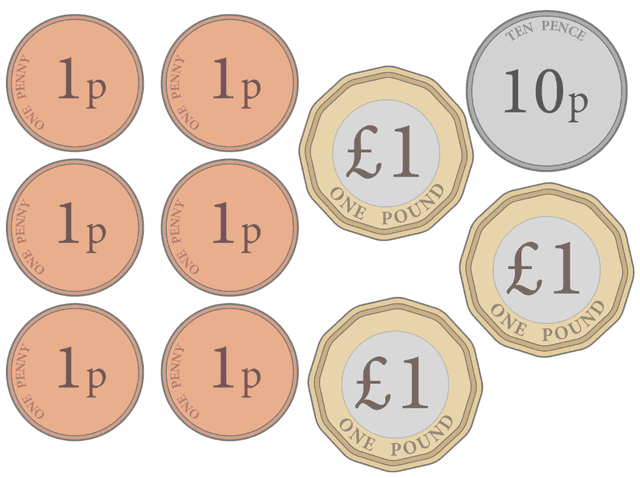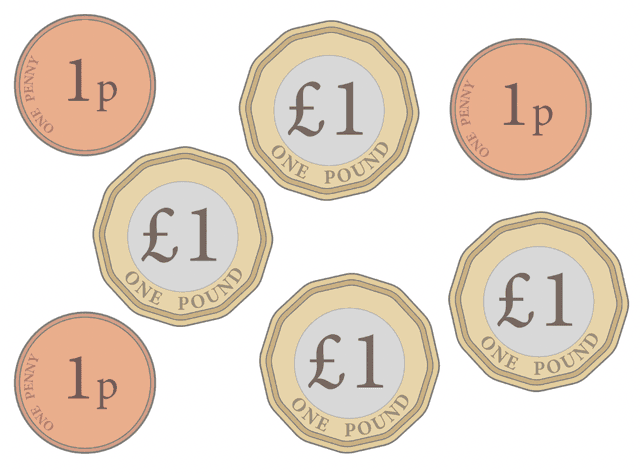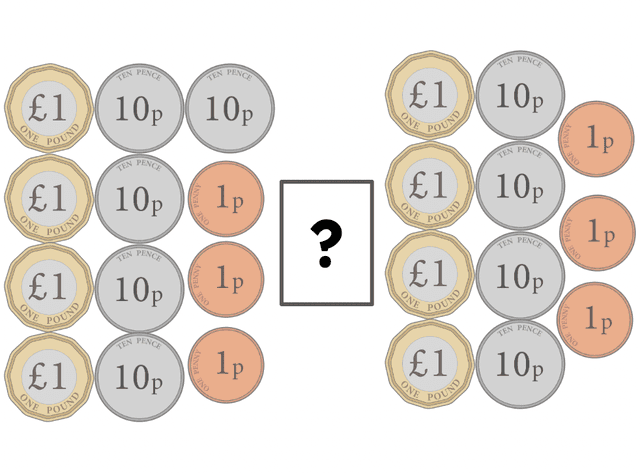Myths about teaching can hold you back
- Year 4
Explain how to compare amounts of money without converting
I can explain how to compare amounts of money without converting.
- Year 4
Explain how to compare amounts of money without converting
I can explain how to compare amounts of money without converting.
These resources were made for remote use during the pandemic, not classroom teaching.
Switch to our new teaching resources now - designed by teachers and leading subject experts, and tested in classrooms.
Lesson details
Key learning points
- Use understanding of comparing numbers with two decimal places to compare money.
- If the pounds value is the same, look to the 10p column to compare the amounts of money.
- If the pounds and 10p values are the same, look to the 1p column to compare the amounts of money.
Keywords
Compare - You can compare to find out what is the same and what is different.
Inequality symbol - An inequality symbol is used to show that one number or measurement is not equal to another.
Greater than / less than - Greater than means a number is bigger than another number and less than means it is smaller.
Ascending - Ascending order is when items are arranged from smallest to largest.
Descending - Descending order is when items are arranged from largest to smallest.
Common misconception
Pupils may think that if money amount is made up of more coins it must have a higher value.
Encourage pupils to group their coins and set them out in order. Focus on the highest value digit first.
To help you plan your year 4 maths lesson on: Explain how to compare amounts of money without converting, download all teaching resources for free and adapt to suit your pupils' needs...
To help you plan your year 4 maths lesson on: Explain how to compare amounts of money without converting, download all teaching resources for free and adapt to suit your pupils' needs.
The starter quiz will activate and check your pupils' prior knowledge, with versions available both with and without answers in PDF format.
We use learning cycles to break down learning into key concepts or ideas linked to the learning outcome. Each learning cycle features explanations with checks for understanding and practice tasks with feedback. All of this is found in our slide decks, ready for you to download and edit. The practice tasks are also available as printable worksheets and some lessons have additional materials with extra material you might need for teaching the lesson.
The assessment exit quiz will test your pupils' understanding of the key learning points.
Our video is a tool for planning, showing how other teachers might teach the lesson, offering helpful tips, modelled explanations and inspiration for your own delivery in the classroom. Plus, you can set it as homework or revision for pupils and keep their learning on track by sharing an online pupil version of this lesson.
Explore more key stage 2 maths lessons from the Money: apply efficient strategies when calculating with money unit, dive into the full primary maths curriculum, or learn more about lesson planning.

Licence
Prior knowledge starter quiz
6 Questions
Q1.Sort the following numbers so that they are in ascending order.
Q2.Sort the following numbers so that they are in descending order.
Q3.Match the symbol with the correct meaning.
less than
greater than
equals
Q4.Which of these symbols would make the number sentence correct? £87 _ 87 p
Q5.Look at the image. How much money is shown?

Q6.How much money is here?

Assessment exit quiz
6 Questions
Q1.True or false: £3.08 < £3.80
Q2.Which symbol needs to be inserted to correctly compare the two amounts of money shown?



